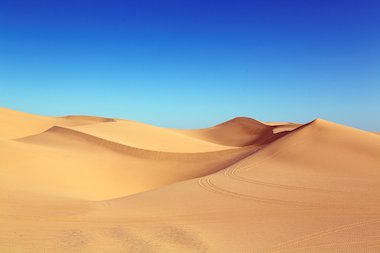Deserts: topic summary
Add to My Folder
Our handy topic summaries can be used to support homework, as well as providing helpful collections of related resources for teachers to use in school or for parents to use for home learning.

Deserts are usually considered to be dry, arid regions of sand and rock with very little rainfall (less than 30cm a year). The Arctic and the Antarctic are also termed deserts but these are covered with snow and ice. Deserts cover about one third of Earth’s surface. Among the world’s biggest hot deserts are the Sahara in North Africa, where many square kilometres are covered with endless stretches of sand dunes. Also notable are the Kalahari in Southern Africa, the Gobi in Asia, the Atacama in South America and the Mojave in North America. Much of central Australia is also a desert region. Temperatures in hot deserts exceed 30º C while in the polar deserts it can drop to – 60º C.
Some animals and plants do live and survive in hot deserts. Insects, snakes and lizards bury themselves in sand to shelter and small animals like rats, meerkats and jerboas often hunt at night when it is cooler. Plants that thrive have small waxy leaves so they do not lose moisture or long roots to seek out water deep underground. Those that flower have seeds that lie dormant until the rains arrive. Grasses, small bushes and cacti are common and palm trees, figs and dates will grow near fertile water holes called oases. Many people who live in these regions are nomadic, travelling around with flocks of animals to seek food and water. They live in well ventilated tents and wear cool clothing that protects their heads and faces. A favoured form of transport is the camel, an animal that is well suited to hot deserts. Camels’ feet enable them to walk on sand easily, their eyelids protect them from the fierce desert sandstorms and they can store fat in their humps when food and water is in short supply.
Published 29 July 2020
Reviews
You need to be signed in to place a review.